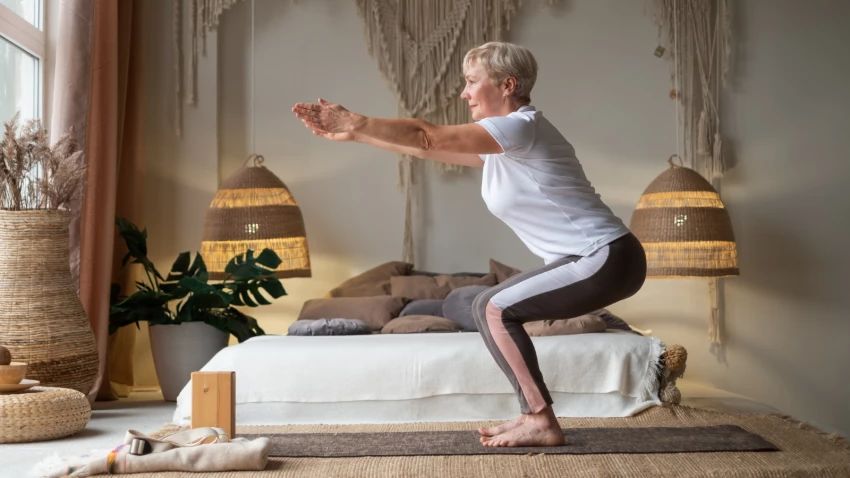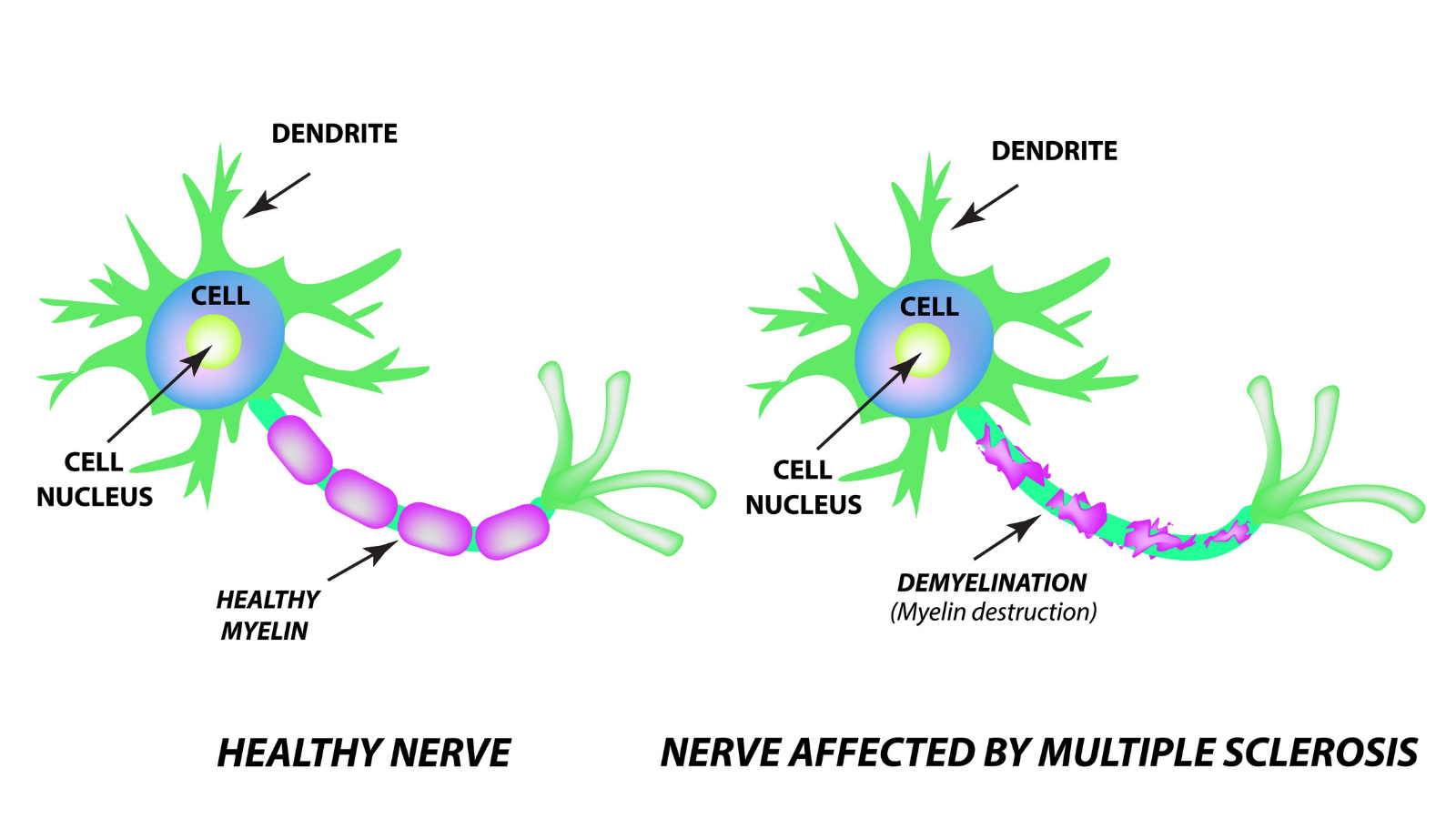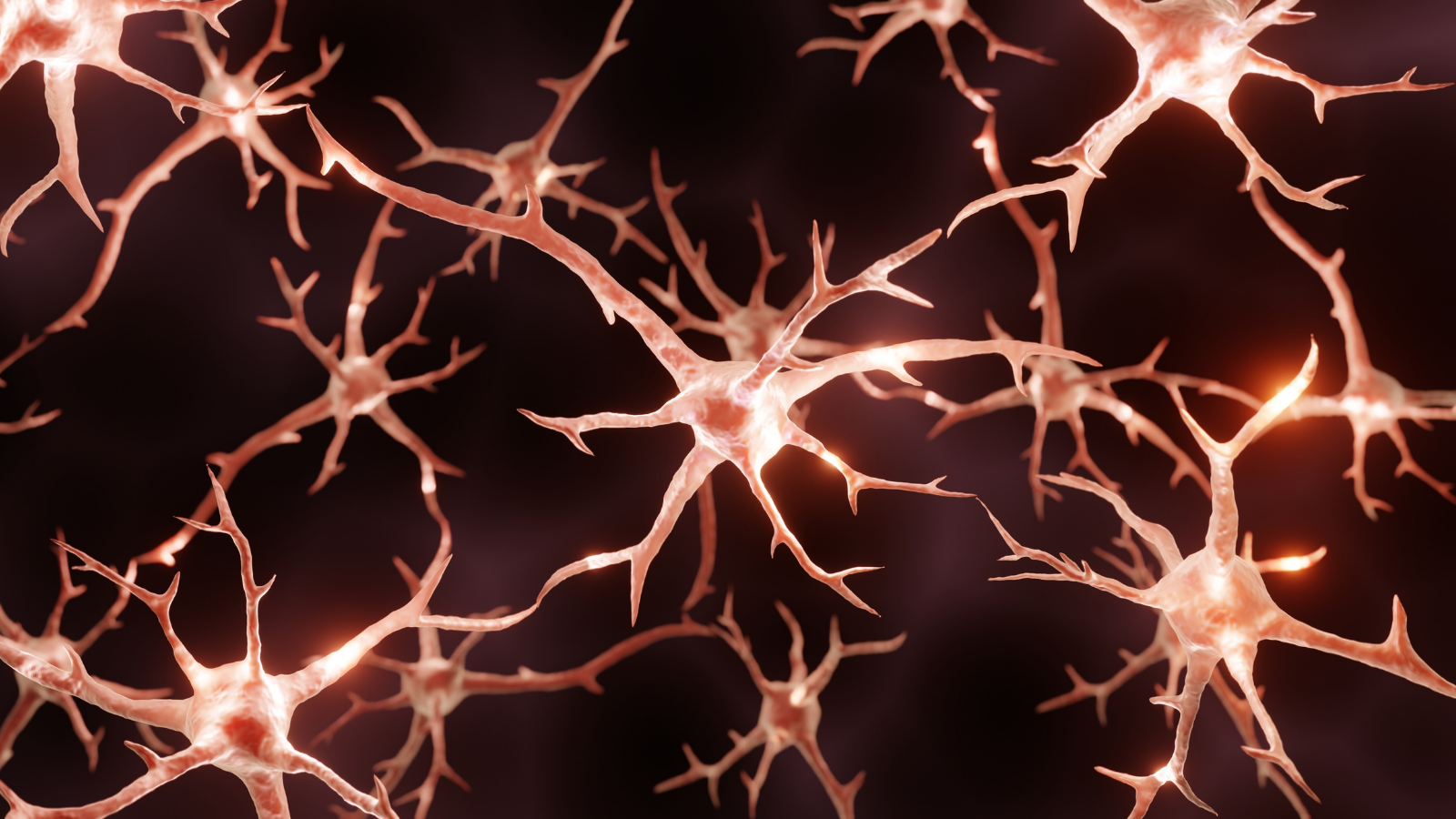Yoga Can Help with Multiple Sclerosis

Multiple sclerosis (MS) is a condition of the nervous system that affects nearly one million people in the U.S. and 2.3 million around the world. There is, as yet, no cure for MS. However, research shows patients can manage symptoms with practices such as yoga for multiple sclerosis.
Neurons and the Myelin Sheath
Neurons, which serve as the core components of the brain and spinal cord of the central nervous system, are electrically excitable cells. Neurons process and transmit information via electrochemical signals thereby forming complex neural networks. These signals travel intraneuronally through specialized junction points called synapses.
In order to ensure rapid and efficient transmission of information, neurons are endowed with an insulating sheath called myelin. The presence of myelin ensures speedy transmission of electrochemical impulses along the myelinated neuron to the next neighboring neuron. It also helps prevent the electrochemical signals from randomly leaving the neuron, thereby permitting agile communication for long-distance signaling and sustaining such signals.
Myelinated neurons (neurons that are endowed with the myelin sheath) are white in appearance, hence the term “white matter” of the brain. Under a microscope, myelinated neurons appear like strings of sausages. The main constituent of myelin is cholesterol and it also has about 15 to 30 percent proteins. The predominant protein is myelin basic protein (MBP).
What Is Multiple Sclerosis?
For reasons that are unclear, the body’s defense system in some individuals recognizes the myelin basic protein as “foreign” and starts attacking it. This self-driven inflammatory condition is Multiple Sclerosis or MS. When the body’s defense system lays siege on the myelin, the protective sheath loses its structural and functional integrity, resulting in disruption of smooth neural communication. The more myelin is destroyed, the slower and less efficient the nerve impulses are. Eventually, as the disease progresses, it can cause the nerves themselves to deteriorate or become permanently damaged.
The signs, symptoms, severity, and duration of MS will vary depending on the extent of nerve damage, and which nerves are affected. Some people may have low-grade inflammation most of their lives, while others may develop severe chronic symptoms that never go away. Women are more than twice as likely to develop multiple sclerosis as men. MS usually affects people between the ages of 20 and 50 years, and the average age of onset is approximately 30 years.
Symptoms of Multiple Sclerosis
Common early signs of MS include: vision problems; tingling and numbness in joints, fingers, and toes; pain; spasms; weakness; fatigue; balance problems; dizziness; bladder issues; sexual dysfunction; and cognitive problems. As the disease progresses, symptoms may become more severe. While MS is not a fatal disease, there is currently no cure for it. People with MS have essentially the same life expectancy as the general population. Anti-inflammatory treatments modify the course of the disease and can help to manage the symptoms as well as recover from the inflammatory attacks. Physical and occupational therapies are a great way to manage the condition.
How Yoga for Multiple Sclerosis Can Help Ease Symptoms
Yoga for multiple sclerosis does not cure the condition. But yoga’s postures and breathing techniques can help to focus the mind. Practicing yoga teaches us to pay attention to the body.
For example, for people with full-blown symptoms of MS, mornings can be an ordeal, because the body is tight and rigid from the previous night’s sleep. The practice of yoga can ease many of the physical symptoms and emotional challenges through breathing and stretching exercises. This helps individuals successfully complete tasks and do things for the rest of the day with less pain and discomfort. Several of the yoga postures can safely address many MS symptoms, such as loss of bladder control, balance, and fatigue.
Research on Benefits of Yoga for Multiple Sclerosis
Several research studies discuss the benefits and potential role of yoga as an alternative treatment of symptom management for individuals with MS and describe how yoga can improve their quality of life.
In all of the research studies involving yoga for multiple sclerosis, the opinion among subjects with MS was unanimous: subjects reported improvements in mental and emotional health, concentration, bladder control, vision, and ability to withstand pain better.
Yoga for multiple sclerosis has been shown to lessen fatigue and increase energy levels. Fatigue is one of the most common symptoms of MS. Furthermore, subjects also revealed improved motor coordination, better capacities for walking without losing balance or coordination of gait, and improvement in being able to stand up from a sitting position.
How to Practice Yoga for Multiple Sclerosis
For people with MS who are practicing yoga, the emphasis is on:
- Improving strength and flexibility: Asanas include among others Mountain Pose (Tadasana), Warrior poses (Virabhadrasana I, II, and III), Boat Pose (Paripurna Navasana), Chair Pose (Utkatasana), Side Angle Pose (Parsvakonasana), and Sun Salutation (Surya Namaskaram).
- Balance: It is always advisable to use the wall and/or props to keep steady and maintain balance in each pose.
- Agility: Always start with slow, precise changes of position in asana practices, such as a slow Sun Salutation. Take one pose and vary it in several different ways including using blocks, straps, and other yoga props.

Based on the gravity of the symptoms, individuals with MS can easily adapt the postures to their comfort level. People who have difficulty holding a yoga pose without assistance can use blocks and other assistive devices to get the benefit from the pose when flexibility and other issues interfere. People in wheelchairs can benefit from chair yoga and other suitable props that will help them to get to the pose and benefit from it. Together with a short pranayama and meditation practice, yoga for multiple sclerosis gives people coping tools they can use for the rest of their lives. All of the research studies together with anecdotal reports are steps in the right direction. They show that a yoga program is very effective in improving the quality of life for people with MS.
Also, read...
Somatic Yoga Flow: Around the Clock
Yoga for Multiple Sclerosis
Yoga Can Help with Multiple Sclerosis
Related courses
Bodymind Ballwork: Myofascial Release for Lifelong Flexibility
Keys to Finding Inner Strength: A Yogic Wisdom Path to Developing Greater Resilience
Somatic Yoga for Fascial Unwinding

Rammohan (Ram) Rao comes from a family of Ayurvedic practitioners and Vedic teachers in India tracing back to the illustrious Vedic-acharya Rishi Kaundinya (although Ram admits he cannot do the Eka pada or Dwi pada Kaundinyasana). With a doctorate in Neuroscience, Ram was a Research Associate Professor at the Buck Institute for Research on Aging. He focused on various aspects of age-associated neurodegenerative diseases with an emphasis on Alzheimer’s disease. In addition, Ram completed the academic training at the California College of Ayurveda (CCA) and received his certification as a Clinical Ayurvedic Specialist. He has been a faculty member of the California College of Ayurveda and teaches in their Nevada City location. Ram is also a dedicated Hatha yoga practitioner and is a Registered Yoga Teacher from Yoga Alliance USA. In his spare time, he offers consultations in YAMP techniques (Yoga, Ayurveda, Meditation & Pranayama). Ram has published several articles in major Yoga/Ayurveda magazines and has been a featured speaker in several national and international meetings and symposia. He is a member of the National Ayurvedic Medical Association (NAMA) and is on the Research Board of the Association of Ayurvedic Professionals of North America (AAPNA).





